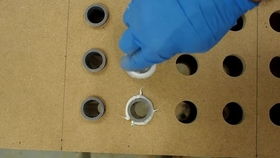Sanding Down Concrete: A Comprehensive Guide
Concrete surfaces, whether they are in your home, office, or any other building, can accumulate a layer of dirt, grime, or even paint over time. This not only affects the appearance of the surface but can also lead to safety hazards. Sanding down concrete is a process that can restore the surface to its original state, improve its appearance, and even enhance its durability. In this article, we will delve into the various aspects of sanding down concrete, from the tools and equipment needed to the best practices for achieving a smooth and even finish.
Understanding the Purpose of Sanding Concrete

Sanding concrete serves several purposes. It can be used to remove old coatings, such as paint or sealant, to prepare the surface for new applications, or simply to smooth out rough or uneven areas. By understanding the reason for sanding, you can choose the appropriate method and equipment to achieve the best results.
Tools and Equipment Needed for Sanding Concrete

Before you begin sanding down concrete, it’s essential to gather all the necessary tools and equipment. Here’s a list of the most common items you’ll need:
- Concrete Sander: This is the primary tool for sanding concrete. There are various types available, including hand sanders, walk-behind sanders, and even ride-on sanders for larger areas.
- Grinding Wheels: These are used with a concrete sander to remove material quickly and efficiently. They come in different grit sizes, with finer grits used for finishing and coarser grits for more aggressive sanding.
- Safety Gear: Always wear protective gear, including safety glasses, gloves, and ear protection, to safeguard yourself from debris and noise.
- Chisels and Hammer: These are useful for removing stubborn adhesives or coatings that won’t come off with sanding alone.
- Water and Bucket: Keeping the surface wet while sanding can help reduce dust and improve the sanding process.
It’s important to choose the right tool for the job. For smaller areas, a hand sander may be sufficient, while larger areas may require a walk-behind or ride-on sander.
Preparation Before Sanding

Before you start sanding, it’s crucial to prepare the concrete surface properly. Here are some steps to follow:
- Remove Debris: Sweep the surface to remove any loose debris or dirt.
- Identify Adhesives or Coatings: If there are any adhesives or coatings on the surface, identify them to determine the best method for removal.
- Check for Cracks or Damage: Inspect the surface for any cracks or damage that may need to be repaired before sanding.
- Secure the Area: If sanding in a larger area, secure the area to prevent tripping hazards and to keep dust contained.
The Sanding Process
Once you have prepared the surface and gathered your tools, you can begin the sanding process. Here’s a step-by-step guide:
- Start with a Coarse Grit: Begin with a coarse grit grinding wheel to remove any thick coatings or rough areas.
- Work in Sections: Sand the surface in small sections, moving the sander in a straight line to avoid leaving tracks.
- Keep the Surface Wet: If possible, keep the surface wet to reduce dust and improve the sanding process.
- Switch to a Finer Grit: Once the rough areas are removed, switch to a finer grit grinding wheel to achieve a smooth finish.
- Inspect and Repeat: After each pass, inspect the surface for any remaining rough areas and repeat the process as needed.
Finishing Touches
Once the sanding process is complete, you may need to perform some finishing touches:
- Wash the Surface: Clean the surface with water to remove any remaining dust or debris.
- Repair Cracks or Damage: If any cracks or damage were identified during preparation, repair them before applying any new coatings or sealants.
<













